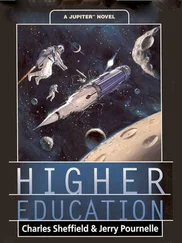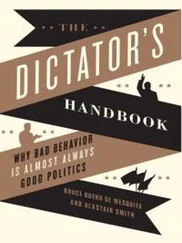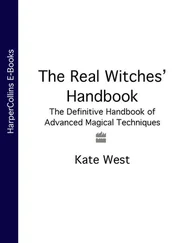1 Cover
2 Series Page
3 Title Page
4 Copyright Page
5 List of Figures and Tables
6 List of Contributors
7 1 Sustainable Development 1.1 Introduction 1.2 Background 1.3 Promoting Sustainability in Higher Education References
8 Part I: Transforming the Curriculum – Pedagogy Focused Initiatives 2 Activist Learning for Sustainability 2.1 Introduction 2.2 Methodology and Case Description 2.3 Student Motivations and Experiences of the SSH Project 2.4 Areas of Student Learning: Embodied vs. Abstract Learning 2.5 Activist Learning across the Formal, Informal, and Hidden Curriculum 2.6 The Relationships Between Staff and the Activist Learner 2.7 Conclusion and Recommendations Acknowledgments References 3 Outcome‐Based Education Toward Achieving Sustainable Goals in Higher Education 3.1 Outcome‐Based Education (OBE) and its Significance 3.2 Pragmatic Mapping of Student Learning Outcomes and Learning Objectives 3.3 Current Research on OBE 3.4 Strategies to Enhance Student Learning Outcomes and Concluding Remarks Acknowledgment References 4 Transforming Ourselves to Transform Societies 4.1 Introduction 4.2 A Call for a Different Paradigm of Education: From Reproducing Systems to Transforming Ourselves and Society 4.3 A Response from Virtue Tradition 4.4 Virtue Education in Practice: Exploring Pathways to Develop Phronesis for Sustainability 4.5 Final Remarks References 5 Factors that Hinder the Implementation of Sustainability Initiatives in Higher Education Institutions 5.1 Introduction 5.2 Sustainability in Higher Education 5.3 Sustainability Initiatives in HEIs 5.4 Challenges for the Implementation of Sustainability Initiatives in HEI 5.5 Factors that Overcome the Challenges for the Implementation of Sustainability Initiatives in HEIs References 6 Developing Stakeholder Agency in Higher Education Sustainability Initiatives 6.1 Introduction 6.2 Literature Review 6.3 Transformative Agency 6.4 The Change Laboratory 6.5 Research Design 6.6 Findings 6.7 Discussion 6.8 Conclusion References 7 Technology‐Enhanced Education: Improving Students' Learning Experience in the Higher Education Context 7.1 Introduction of Sustainable Higher Education Made by Technology‐Enhanced Learning (TEL) 7.2 Sustainable Higher Education and TEL 7.3 Integrating Blended Learning in Higher Education (HE) 7.4 Exploring Innovative Ubiquitous Learning Tools in HE Context 7.5 The Impact of the Tech‐Enhanced Classroom to Students' Learning Experience under Various Courses 7.6 From Passive to Active: TEL Improving Students' Learning Experience in an HE Flipped Classroom References 8 Sustainability Assessment Tools in Higher Education Institutions 8.1 Introduction 8.2 An Overview of Sustainability Assessment and the Associated Tools at HEIs 8.3 Methods and Steps 8.4 Results and Comparative Analysis 8.5 Overall Discussion and Potential Areas of Improvement 8.6 Conclusions References 9 COVID‐19 Disruptions to SDG 4 in Higher Education Institutions 9.1 Introduction 9.2 The Educational Background of the 2030 Agenda 9.3 The Genesis of SDG 4 in Higher Education 9.4 SDG 4 in the Context of Inclusive Higher Education 9.5 SDG 4 in the Context of Sustainable Higher Education 9.6 COVID‐19 Disruption to SDG 4, at a Glance 9.7 Higher Education During the COVID‐19 Pandemic 9.8 Wrap up References
9 Part II: Transforming the Curriculum – Discipline‐Specific Initiatives 10 Integrating Harmonious Entrepreneurship into the Curriculum 10.1 Introduction 10.2 The Challenge 10.3 Barriers to Integration into the Curriculum 10.4 Overcoming the Barriers 10.5 Conclusion References 11 Sustaining Place Transformations in Urban Design Education 11.1 Introduction 11.2 Urban Design and Its Multiple Pedagogies 11.3 The Urban Density, Mix, Access, Public/Private Interface, and Type 11.4 Case Study 11.5 Concluding Discussions Acknowledgments References 12 Sustainability of Innovations in Health Professions Education 12.1 Introduction 12.2 Curriculum Development and Evaluation 12.3 Teaching and Learning 12.4 Assessment 12.5 Conclusion References 13 Sustainability in Energy Systems Analysis and Design 13.1 Introduction 13.2 Energy Systems 13.3 Requisite Learning Outcomes 13.4 Summary and Recommendations References
10 Part III: Global Trends – Country Specific Initiatives 14 Sustainability Teaching in Higher Education and Universities in Spain 14.1 The Shift Toward More Sustainable Practices: Global Framework 14.2 Changes in Educational Policies: The Specific Case of Spain 14.3 Skills in Education: Focus on Environmental Good Practices 14.4 Real Implementation at Higher Education and University Levels 14.5 Main Challenges for Sustainability Implementation in Spanish Education 14.6 The Role of Curricular Adaptation and Transversality 14.7 Success Stories 14.8 Conclusions and Future Trends References 15 Sustainability in Higher Education in Egypt 15.1 Introduction 15.2 The Structure of the Education System in Egypt 15.3 Sustainability and Education: Cultural Perception 15.4 Higher Education for Sustainable Development: An Overview 15.5 Higher Education for Sustainable Development: Challenges and the Way Forward 15.6 Conclusions and Recommendations References 16 Youth Communicators as an Engine for Sustainable Development 16.1 Introduction 16.2 Do HEIs Complement Community Needs? 16.3 A Pilot Project for Pakistan's Rural Universities 16.4 The Role of TVET toward Community Development 16.5 Conclusion Acknowledgment References 17 Streamlining Higher Education in the Maldives 17.1 Introduction 17.2 Emerging Issues and Challenges in Streamlining Higher Education in the Maldives up to the Global Standards 17.3 Addressing the Issues for Embedding Sustainability in Higher Education 17.4 Conclusions References 18 Embedding Sustainability into the Education Process in the Faculty of Horticulture and Landscape Engineering, SUA in Nitra, Slovakia 18.1 Introduction 18.2 Education System in the FHLE, SUA in Nitra, Slovakia 18.3 Embedding Sustainability into the Landscape Engineering Program 18.4 Embedding Sustainability into the Landscape Architecture Program 18.5 Embedding Sustainability into the Horticulture Programs 18.6 Further Education Activities for Students, the Public, and Professionals 18.7 Projects Focused on the Sustainability Application into the Study Programs 18.8 Involvement of Students 18.9 Conclusions and Recommendations Acknowledgment References
11 Part IV: Equity and Inclusion within Sustainability Education 19 Inclusive Education and Sustainable Development 19.1 Introduction 19.2 Government Policies for Inclusive Education 19.3 Challenges and Opportunities in Higher Education for Students with Disabilities 19.4 Conclusion – Achieving Sustainable Development through Inclusive Education References 20 Embedding Sustainability in Learning and Teaching 20.1 Introduction 20.2 Education and Communication of SNLs When Embedding Sustainability in Learning and Teaching 20.3 Curriculum with Assessment and Evaluation Criteria to Overcome Communication Barriers of SNLs when Embedding Sustainability in Learning and Teaching 20.4 Conclusion 20.5 Recommendations References 21 Sustainable Higher Education for Disabled Students 21.1 Introduction 21.2 Participants in Higher Education of Disabled Students 21.3 University of Zagreb Support Model 21.4 Is this Model Inclusive and Sustainable? 21.5 Guidelines for Progress and Sustainability References 22 Barriers, New Developments, and Emerging Trends in Sustainability in HE 22.1 Barriers to Embedding Sustainability in Learning and Teaching 22.2 Emerging Good Practice in Promoting Sustainability in HE 22.3 Conclusion References
12 Index
13 End User License Agreement
1 Chapter 2 Table 2.1 Distinguishing characteristics between formal, non‐formal, informa... Table 2.2 Summary of advantages and disadvantages of promoting activist lear... Table 2.3 Recommendations to support activist learning.
Читать дальше












